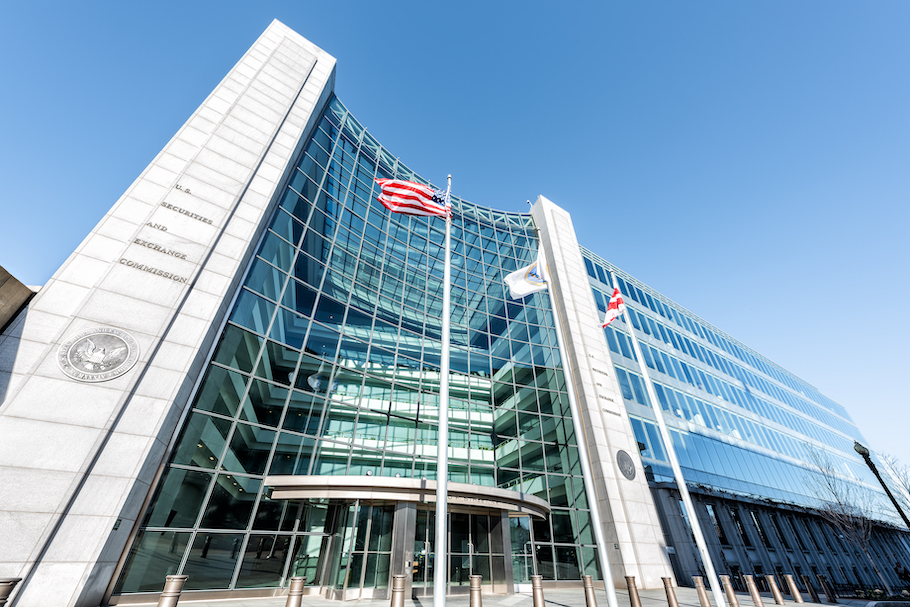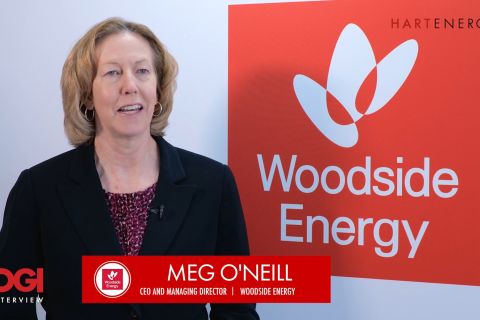When the subject of ESG reporting comes up, you’re likely to encounter some head scratching or even downright confusion. ESG reporting has entered the mainstream over the past several years, but even companies that want to participate have questions.
For now, public companies aren’t required to provide ESG reports along with their financials, but it’s only a matter of time before SEC-registered companies will need to comply with some level of reporting or disclosure requirements related to their sustainability practices. While the impact will be felt first by public companies, private funds and private companies will likely follow. ESG disclosures and underlying data will be under a microscope, and complete and accurate data will be critical and essential.
But it is not always easy to understand what businesses are being asked to do and report. What do shareholders, institutional investors and customers expect? And how are the most successful companies responding?
To answer these questions, it’s helpful to understand the ESG landscape as it is now and what to expect over the next few years.
The foundation: ESG frameworks

ESG reporting is being driven by nearly 20 organizations that have developed frameworks for what needs to be reported. The evolution of ESG is at a point where multiple players are still competing to become the reporting standard. However, this may change over the next several years as key alliances begin to emerge. A long-awaited rationalization of the many ESG reporting standard setters began in 2021.
One recent development that has made headlines is the formation of the International Sustainability Standards Board (ISSB) by the IFRS Foundation. Drawing upon the successful adoption of IFRS accounting standards on a global scale, the foundation is aiming to replicate similar adoption of sustainability disclosures for the financial markets.
Additionally, the Sustainability Accounting Standards Board (SASB) completed its merger with the International Integrated Reporting Council to form the Value Reporting Foundation (VRF). Plus, the IFRS Foundation has persuaded the VRF to join its sustainability initiative alongside the formation of the ISSB.
While framework alliances are becoming more frequent, there is still no one framework that has been universally adopted for ESG reporting. Six frameworks have emerged as the most widely adopted with the Global Reporting Initiative (GRI) Standards framework receiving widespread adoption among oil and gas companies. SASB and the Task Force on Climate-related Financial Disclosures (TCFD) adoption also has increased over the last 24 months across the energy sector.
Six Major ESG Frameworks
GRI
- Includes standards across environmental, social and economic factors, which ideally are used together to prepare sustainability reports focused on material topics
- Widely considered to be the broadest and most deeply researched framework
- GRI standards identify and describe how a company’s “economic, environmental and social impacts” contribute toward sustainable development. For GRI, “material” matters are not necessarily limited to those which have a financial impact, but also include those that may become financially material over time
SASB
- Includes more than 70 standards that measure how sustainability issues affect the company and its financial performance. Includes disclosure topics, associated accounting metrics and technical protocols, and activity metrics for each covered industry
- Designed to assist businesses around the world identify, manage and report on sustainability topics that matter most to their investors
- SASB’s conceptual framework contains industry-specific standards focusing on ESG matters most likely to affect a company’s financial condition, operating performance and risk profile. For SASB, “material” matters are those which have a financial impact
TCFD
- Climate-related disclosure framework chaired by Michael Bloomberg
- Disclosure recommendations are structured around four thematic areas that represent core elements of how organizations operate: governance, strategy, risk management, and metrics and targets. These thematic areas are intended to interlink and inform each other
Integrated Reporting Framework
- Made up of six sources of capital - financial, manufactured, human, social and relationship, intellectual and natural. Includes guiding principles and practical content elements for reporting
- Urges companies to issue “concise” integrated reports (combining traditional, annual financial with ESG data) that detail “… the creation of value in the short, medium and long term.”
CDP
- Focuses almost exclusively on climate reporting, energy strategy and climate change
- At the request of their investors, purchasers and city stakeholders, CDP supports companies, cities, states and regions in measuring and managing their risks and opportunities on climate change, water security and deforestation
Sustainable Development Goals
- Made up of 17 goals that address poverty, inequality, climate change, environmental degradation, peace and justice
- Asks companies to publicly endorse and operationally integrate a 10-point policy, covering human rights, labor standards, environmental actions and anti-corruption
Role of ratings organizations
Ratings organizations gather company ESG data either through direct surveys or through publicly available disclosures. Using a defined ratings criteria and application of qualitative and quantitative scoring, a company’s ESG score is assigned based on their view of a company’s risk exposure versus their industry peers. These scores are made available to the investment community as part of benchmarks and other ESG ratings data.
Some of the leading players include Sustainalytics, S&P Global and ISS (Institutional Shareholder Services). Much like ESG reporting itself, the methodologies employed by these ratings agencies are not consistently aligned with any particular ESG disclosure framework.
ESG in oil and gas
For oil and gas companies, the “E” in ESG will be one of the major areas of focus in preparing accurate reports, regardless of the framework used. However, the pandemic has heightened the focus on the “S” as investors and the public focus on how employers respond to issues like workplace safety, pay equity and other related topics. And the “G” is fundamentally important to overall operations.
While ESG reporting as a whole is still gaining traction, there has been wide adoption within the oil and gas industry of sustainability reporting. According to a November 2021 study conducted by the Governance & Accountability Institute Inc., 92% of companies in the S&P 500 issue a sustainability report. The industry should continue to see that number grow, and the reporting is likely to get much better.
Levels of Engagement among Companies in the Oil and Gas Industry |
|
|
Limited response |
|
|
Partially responsive |
|
|
More responsive |
|
Getting started
It can be a challenge for companies to compile information for ESG reports, particularly when many divisions, geographies and business segments are required to gather and submit. The most practical way to start is to leverage a company’s current processes and controls and begin to integrate ESG throughout internal controls, enterprise risk management, reporting and compliance.
Gaining assurance over key metrics is an easy and generally affordable way to bring further distinction and confidence to the most critical metrics. The same way that independent auditors provide assurance over financials, ESG metrics will follow suit.
SEC’s role

The SEC’s role is really about regulating the reporting and disclosure of ESG information, not requiring that companies produce this information or take other actions. The SEC cannot tell companies, for example, to reduce their carbon emissions.
What the SEC can provide is disclosure standards to drive transparency, consistency and support comparability for the market.
Under current SEC regulations and guidance, the disclosure of ESG issues is required only if “material”―meaning that information regarding an ESG issue is required to be disclosed only if it would be viewed as significantly impacting or altering information available for investors.
The time is now
For oil and gas companies and others in the energy business, being prepared and getting ahead of the curve will not only put them in a better position, it will help avoid future issues. If companies don’t proactively manage and disclose key information along with financials, they can face reputational, investment and other consequences. Another benefit is that transparency and accountability should drive improvements in brand and perception.
The time to act on ESG reporting is now, even if it’s just the beginning of the journey.
About the author: Greg Englert is a partner of Risk Advisory Services at Weaver, a Texas-based national accounting firm. As the service leader for ESG reporting, he works with a variety of companies and investors to develop their ESG reporting programs. His practice has deep experience optimizing risk and compliance functions while solving internal control environment challenges.
Recommended Reading
Deepwater Roundup 2024: Offshore Australasia, Surrounding Areas
2024-04-09 - Projects in Australia and Asia are progressing in part two of Hart Energy's 2024 Deepwater Roundup. Deepwater projects in Vietnam and Australia look to yield high reserves, while a project offshore Malaysia looks to will be developed by an solar panel powered FPSO.
E&P Highlights: April 1, 2024
2024-04-01 - Here’s a roundup of the latest E&P headlines, including new contract awards.
Petrobras to Step Up Exploration with $7.5B in Capex, CEO Says
2024-03-26 - Petrobras CEO Jean Paul Prates said the company is considering exploration opportunities from the Equatorial margin of South America to West Africa.
Exxon Versus Chevron: The Fight for Hess’ 30% Guyana Interest
2024-03-04 - Chevron's plan to buy Hess Corp. and assume a 30% foothold in Guyana has been complicated by Exxon Mobil and CNOOC's claims that they have the right of first refusal for the interest.
The OGInterview: How do Woodside's Growth Projects Fit into its Portfolio?
2024-04-01 - Woodside Energy CEO Meg O'Neill discusses the company's current growth projects across the globe and the impact they will have on the company's future with Hart Energy's Pietro Pitts.





